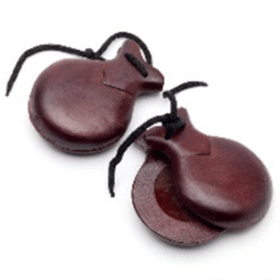As part of their outreach time after English conversation activities, a church-based English café in Berkshire followed the 2:19’s So Lord, Speak series. The stories were accompanied each week by six beautiful images which helped the learners to visualise the events and learn vocabulary. Together with the discussion time afterwards the series was well received and enjoyed by all learners, provoking thoughtful questions and chat. The teachers and helpers decided to take the six-image idea to help share their life-stories with the learners the following term. However, rather than six images they chose six objects and called it “My life in six objects”! (The idea is loosely based on a BBC Radio 4 series called, A history of the world in 100 objects.)
They said, “We thought that sharing our life stories using six objects would help our learners as they listened to us, engaging their attention and giving ‘hooks’ to hang the details of our stories onto. As we shared our stories we included ‘the word of our testimony’ (when, how, and why we came to faith in Jesus). This was to echo the reference in Revelation 12:11 to how believers share their ‘testimony’ to Christ. Through this we hoped that our learners would hear the story of Jesus again, but this time in the way that he was with us in our personal every day, in the ups and downs, joys and struggles of our own lives as Christians.
Below are some ‘Top Tips’ for how to do this yourselves.
BEFORE SHARING
- Set aside a generous 30-minute time slot -10 minutes for the story, 10 minutes to talk in small groups about the story (remembering what the objects represented, and discussing interesting facts heard), and 10 minutes for group questions and feedback.
- Choose six objects (‘realia’[i]) that represent or help listeners to imagine important people/things/places/experiences in your life. These will help to set the scene for your story.
- Consider that these objects will be ‘hooks’ for your They can ‘hang’ information onto these hooks e.g. new words or phrases and, of course, the special moment or event in your life that they represent.
 Show and elicit or, if new, teach the names of all the objects before you begin telling your story. This will aid learners’ understanding later when these objects are shown again, and the vocabulary is repeated in your story. The objects become reference points. Lower-level learners may miss some information in your story but they will remember the objects and what they represent.
Show and elicit or, if new, teach the names of all the objects before you begin telling your story. This will aid learners’ understanding later when these objects are shown again, and the vocabulary is repeated in your story. The objects become reference points. Lower-level learners may miss some information in your story but they will remember the objects and what they represent.- Put the objects at a height where everyone can see them or bring the learners around a table as you lay them out one by one.
 You might like to prepare some short notes for the learners, highlighting key points about each object or season of your life. They can refer to this later and it will reinforce understanding.
You might like to prepare some short notes for the learners, highlighting key points about each object or season of your life. They can refer to this later and it will reinforce understanding.- It might be helpful to divide your life into decades (depending on how old you are!) to give a framework to your planning. Think of an experience or event that marks that period. An object may come to mind as you do this.
- Within your story the important point to share, as a Christian, is when we became aware of our need for Jesus and what happened when we came to Him for forgiveness and new life. You may want to choose an object for this point e.g., a Bible/a cross. (One of our team showed a baptism certificate and explained it.) We have a great opportunity here to share something about Jesus in a very natural way. It is part of your story.
 Think about the main things in your life e.g., family, job, moving house or country, hobbies and passions. When different people in our team shared about their jobs they used a range of objects: pen & paper, international flags, items of clothing, even a power drill! For places of origin, we used flags, a scarf (someone was born in the north of England where it was always cold!). Objects that represented a country included African clothing and even sausages, and for hobbies a toy guinea pig! A teeny pair of shoes represented a grandchild. We even had a ration card representing the period of World War II that one of our dear helpers was born into. Photos are always a treat too.
Think about the main things in your life e.g., family, job, moving house or country, hobbies and passions. When different people in our team shared about their jobs they used a range of objects: pen & paper, international flags, items of clothing, even a power drill! For places of origin, we used flags, a scarf (someone was born in the north of England where it was always cold!). Objects that represented a country included African clothing and even sausages, and for hobbies a toy guinea pig! A teeny pair of shoes represented a grandchild. We even had a ration card representing the period of World War II that one of our dear helpers was born into. Photos are always a treat too.- Think also of aspects of your life that you know your learners would relate to. We do not have time and nor do we wish to share every detail of our lives, but some experiences will be helpful for learners. They will see how through your faith, you managed to continue through both good and difficult moments e.g. moving house or city many times, losing a loved one, a traumatic situation. These events are common to us all.
- Plan your story for a little less than 10 minutes. When you come to tell your story, it will always take longer than you think, so try to practise it beforehand a few times to your family/friends.
WHILST SHARING (10 minutes maximum)
 Speak clearly and in short sentences. Only share relevant Learners will not understand everything. That is normal, but try to avoid unnecessary words. Adapt the level of the language you use to match the learners’ levels in your group.
Speak clearly and in short sentences. Only share relevant Learners will not understand everything. That is normal, but try to avoid unnecessary words. Adapt the level of the language you use to match the learners’ levels in your group.- Be expressive with your voice and body. You want to be exciting to listen to.
- Pause after each object/section.
- Get one of your helpers to write down the names of your objects on a whiteboard/flipchart. They can also note down important years in your life with a word to trigger the event e.g., Bristol, 1971. This will help learners to remember and retrieve the facts when retelling the story later.
AFTER SHARING (10 minutes)
Now it’s time for a short follow-up activity with your learners where the aim is for them to retell your story. Experienced ESL trainer James Keddie says, “For language learners, storytelling is an excellent way to develop spoken fluency, accuracy, listening skills, and confidence.”[ii]
- Sit in small groups with a helper at each table and ask learners to name the six objects and what they
 Then, using information on the board or from memory, helpers can ask questions about the story according to the learners’ levels to help them retell it. Use Wh-questions to help here (e.g. when, where, why, how). Help learners to remember the main events of the person’s story.
Then, using information on the board or from memory, helpers can ask questions about the story according to the learners’ levels to help them retell it. Use Wh-questions to help here (e.g. when, where, why, how). Help learners to remember the main events of the person’s story.
Lower: ‘Where was he born?’ ‘What was his first job?’
Higher: ‘What challenges did she have?’ ‘How did she overcome the problem of….’
Remember to include questions about how the storyteller came to faith in Jesus or how their faith has helped them in their lives. Higher level learners can simply have a go at retelling the person’s story without the question prompts.
QUESTIONS TO END (10 minutes)
Give your learners time to ask questions.
 It will surprise you to hear what they want to know about from your first job, your family, how you met your spouse, to issues of faith. This is also why you do not need to include every fact and detail about your life in your story. Leave something for them to ask about later. ‘Speak truthfully’[iii] to your learners in your answers and if you need more time to answer a specific question, tell them you would love to continue chatting about it another time and then follow up on that. Let your learners feel that any and every question is a good question and important (and you may have some which are completely unrelated to the activity!). We pray that as we are honest and open about our lives something will resonate in our learners’ hearts.
It will surprise you to hear what they want to know about from your first job, your family, how you met your spouse, to issues of faith. This is also why you do not need to include every fact and detail about your life in your story. Leave something for them to ask about later. ‘Speak truthfully’[iii] to your learners in your answers and if you need more time to answer a specific question, tell them you would love to continue chatting about it another time and then follow up on that. Let your learners feel that any and every question is a good question and important (and you may have some which are completely unrelated to the activity!). We pray that as we are honest and open about our lives something will resonate in our learners’ hearts.
We believe that by sharing our stories with our learners we are sowing seeds[iv] and enlarging the harvest of righteousness. We want to sow generously on every occasion and with hearts filled with thanksgiving to our God.
Application for ESL classes/cafés
- Telling ‘My life in six objects’ stories at an English café is a great way of doing personal outreach and evangelism. You can also use other stories as part of language learning, adapted for different levels and different topics you wish to introduce to your learners. It’s a fun and engaging way to teach new vocabulary and phrases.
 Telling your learners stories can be thought of negatively in ESL world because it can be seen as giving too much TTT (teacher talking time). However, James Keddie argues that we are actually ‘embodying a text’[v] and this is a very constructive learning activity for language learners. They are practising listening skills through hearing a wide variety of accents/dialects and will also be getting to know you whilst learning new vocabulary and information. The cherry on top is that they learn different aspects about the real Jesus through each story!
Telling your learners stories can be thought of negatively in ESL world because it can be seen as giving too much TTT (teacher talking time). However, James Keddie argues that we are actually ‘embodying a text’[v] and this is a very constructive learning activity for language learners. They are practising listening skills through hearing a wide variety of accents/dialects and will also be getting to know you whilst learning new vocabulary and information. The cherry on top is that they learn different aspects about the real Jesus through each story!- Start with one object as an example before learners listen to one of the stories. Get them to brainstorm what comes to mind. From there you can build up more words and even some sentences about the object. You can decide how much to do with one object. After they have heard the story, go back to the brainstorm word/phrases and compare them with what was said.
- Higher learners could retell the story as a writing task or write a list of questions to ask the storyteller.
- Take the six objects/main events from a story and, with your learners, create six sentences. Mix them all up and in pairs get learners to sequence
- Ask learners to share the new words/phrases/facts they have learnt.
- You might like to get the learners to prepare their own story for the class. Let this always be optional as it may be too personal or painful for some to share.
Below are some more ideas for stories with objects for your learners:
My home/places I have lived in six objects
My favourite room/place in six objects (e.g. kitchen/park/beach)
My family in six objects
Changes in my life in six objects
My work/job in six objects
My country in six objects
My family in six objects
My hobby in six objects
Things that are important to me in six objects
My faith in six objects
Please do send us feedback if you decide to use any of the ideas presented here.
Thank you to the Reading Family Church ‘Just Talk’ café team and learners for sharing their experiences for the purposes of this article. The images shown were taken from their stories.
Written by Marina Swainston-Harrison
July 2024
For 2:19 Teach to Reach
Footnotes
[i]‘Realia’ in EFL terms refers to any real objects we use in the classroom to bring the class to life. https://www.teachingenglish.org.uk/teaching-resources/teaching-secondary/activities/pre-intermediate-a2/realia
[ii] James Keddie; ‘Videotelling; A story-based approach to video’
[iii] Ephesians 4:35 says “Therefore each of you must put off falsehood and speak truthfully to your neighbour, for we are all members of one body.” (NIV)
[iv] 2 Corinthians 9:10-11 says “Now he who supplies seed to the sower and bread for food will also supply and increase your store of seed and will enlarge the harvest of your righteousness. 11 You will be enriched in every way so that you can be generous on every occasion, and through us your generosity will result in thanksgiving to God.”
